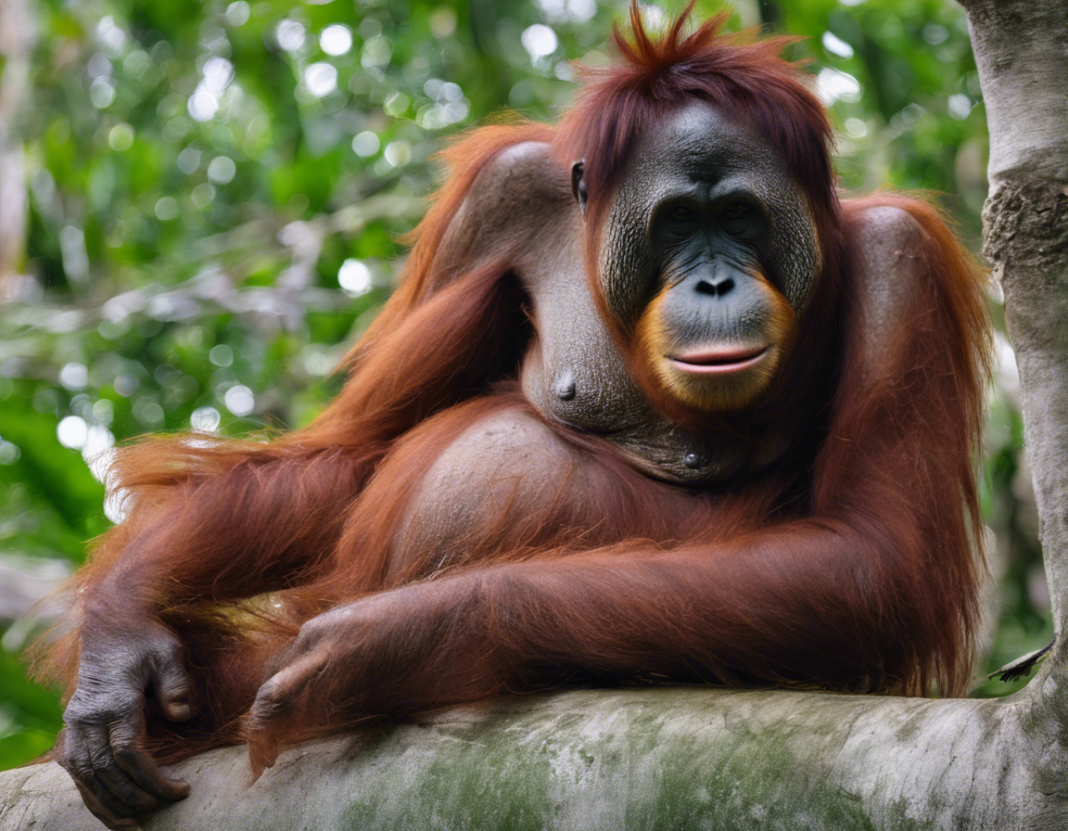Introduction
The orangutan, one of our closest relatives in the animal kingdom, is facing a severe crisis. These intelligent and peaceful creatures are at risk of extinction due to various threats, with one of the most pressing issues being the increasing number of wounded orangutans. The plight of these injured animals is a heartbreaking reflection of the larger challenges faced by the species as a whole. In this article, we will delve into the reasons behind the wounds suffered by orangutans, the impact of these injuries on their survival, and the efforts being made to protect and rehabilitate them.
Reasons for Wounded Orangutans
-
Deforestation: One of the primary reasons for the injuries sustained by orangutans is deforestation. As their natural habitat is destroyed to make way for industries such as palm oil plantations, orangutans are forced to flee and often end up getting injured in the process. The loss of trees and the disruption of their territories increase the likelihood of conflicts with humans, leading to injuries from snares, traps, or even shootings.
-
Human-Orangutan Conflict: As deforestation encroaches upon orangutan habitats, human-orangutan conflicts arise. Orangutans may raid crops or enter villages in search of food, leading to confrontations with humans. In these interactions, orangutans often come out as the losers, suffering severe injuries from machetes, bullets, or other weapons.
-
Illegal Wildlife Trade: The illegal wildlife trade is another significant factor contributing to the woundings of orangutans. Orangutans are captured and sold as pets or for entertainment purposes, resulting in physical injuries from being trapped, transported, or mistreated by their captors.
Impact on Orangutans
-
Physical and Psychological Trauma: Wounded orangutans not only endure physical pain but also suffer from psychological trauma. The loss of a limb or severe injuries can severely impact their ability to survive in the wild, leading to long-term consequences for their physical and mental well-being.
-
Reduced Reproductive Success: Injuries sustained by orangutans can hamper their reproductive success. Females may be unable to care for their offspring properly, leading to a decline in the population growth of the species.
-
Vulnerability to Diseases: Wounded orangutans are more vulnerable to diseases due to compromised immune systems and stress. Injuries can become infected, further compromising their health and overall chances of survival.
Efforts to Protect and Rehabilitate Wounded Orangutans
-
Rescue and Rehabilitation Centers: Organizations such as the Orangutan Foundation International and Borneo Orangutan Survival Foundation run rescue and rehabilitation centers dedicated to caring for wounded orangutans. These centers provide medical treatment, rehabilitation facilities, and a safe environment for orangutans to recover and eventually be reintroduced into the wild.
-
Community Education: Educating local communities about the importance of orangutans and the threats they face is crucial in reducing human-orangutan conflicts. By promoting coexistence and sustainable practices, communities can help protect orangutans and their habitats.
-
Anti-Poaching Efforts: Collaborating with law enforcement agencies to combat illegal wildlife trade and poaching is essential in safeguarding orangutans from further harm. Strengthening regulations and enforcing laws against wildlife trafficking can help deter criminals from targeting orangutans.
Frequently Asked Questions (FAQs)
-
Q: How many orangutans are injured each year due to human activities?
A: It is challenging to provide an exact number, but thousands of orangutans are estimated to be injured annually, with the majority of cases attributed to deforestation, human-orangutan conflicts, and the illegal wildlife trade. -
Q: Can wounded orangutans survive in the wild after rehabilitation?
A: While some orangutans are successfully rehabilitated and reintroduced into the wild, those with severe injuries may struggle to survive independently. In such cases, they may require ongoing support and care. -
Q: What can individuals do to help protect orangutans from harm?
A: Individuals can support conservation organizations, choose sustainably sourced products, raise awareness about the challenges faced by orangutans, and advocate for stronger wildlife protection laws. -
Q: Are there any success stories of rehabilitated orangutans returning to the wild?
A: Yes, there have been several success stories of orangutans rehabilitated in rescue centers and successfully reintroduced into their natural habitats. These cases highlight the importance of rehabilitation efforts in saving the species. -
Q: How do injuries affect the social behavior of orangutans?
A: Injuries can disrupt the social dynamics of orangutan communities, as wounded individuals may struggle to interact with their peers, find food, or defend their territories. This can impact their overall well-being and survival chances.
In conclusion, the plight of wounded orangutans is a stark reminder of the urgent need to protect these magnificent animals and their habitats. By addressing the root causes of their injuries, supporting rehabilitation efforts, and promoting conservation initiatives, we can work towards ensuring a sustainable future for orangutans and preserving their invaluable place in our natural world.

